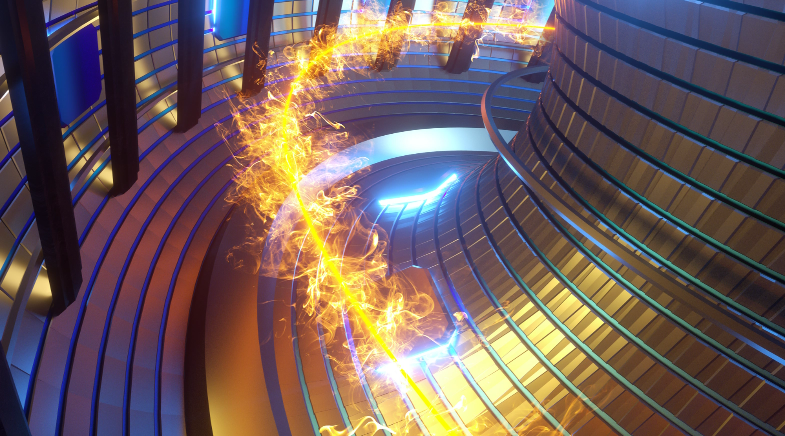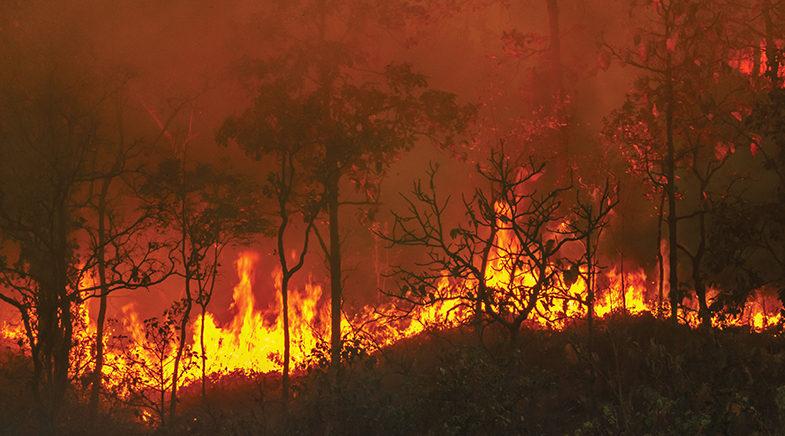Race for power
-
- from Shaastra :: vol 01 edition 03 :: Sep - Oct 2021

Nuclear fusion energy as a carbon-neutral source or power is no longer a distant dream, reckons a former fusion community insider.
In 1957, British physicist John Lawson published a paper that established the conditions for creating sustained fusion reactions by combining elements in a reactor that finally produced more energy than what it consumed. Lawson had concluded that there were no physics-based limitations for achieving nuclear fusion in a reactor. Atomic fusion was the process through which stars produced their energy, and Lawson's paper was a shot in the arm for proponents of fusion energy. In fact, many scientists then believed that the technology would be used widely to produce energy. It didn't quite work out that way.
For the next six decades, at least three generations of scientists tried hard to achieve fusion inside reactors, spending billions of taxpayer dollars in the process. Sustaining a fusion reaction in a confined space had technological challenges that physicists and engineers had not foreseen in the 1950s. So much so that the joke around the world was that fusion was an energy source that was always 30 years away.
But that's about to change, says Arthur Turrell in The Star Builders.

BULLISH ON FUSION
Coming at a time of increasing storms and fires driven by climate change, The Star Builders infuses optimism into the quest for a carbon-neutral source of energy. The book is about people and companies trying to achieve nuclear fusion around the world and, in their own opinion, on the verge of succeeding. In fusion time-scales, the term ‘on the verge' means about 15-20 years. The author is a British economist and data scientist but had done his PhD from Imperial College London on plasma physics. He was, strictly speaking, once an insider of the fusion community.
The major teams he describes are the National Ignition Facility at Livermore in California, the Joint European Torus based near Oxford in the U.K., the Max Planck Institute for Plasma Physics in Germany, the International Thermonuclear Experimental Reaction in southern France, and a few private companies such as the U.K.-based First Light Fusion and Tokamak Energy. Each of these institutions or companies thinks that theirs is the best approach and most likely to succeed. The private companies, especially, are extremely optimistic and talk about operating commercial fusion reactors by the 2040s.
Early in the book, Turrell establishes the need to develop commercial nuclear fusion. The world is hungry for energy, and that demand will only increase in the near future. The world uses 620 exajoules of energy a year (1 exajoule = 1018 joules), and this would increase by 50% by 2050, according to the U.S. Energy Information Administration. It is hard to imagine solar and wind energies supplying a major part of this demand. If fossil fuels can supply no more than 30% of the world's energy by 2050, as the IPCC says, there is no option but to pursue nuclear energy. Nuclear fission is risky and creates dangerous waste. So the best option is fusion, if we could make it work.
The main argument in the book is that it would work, and sooner than we think. Although Turrell remains aloof and rarely expresses strong opinions, he is optimistic about the future of fusion energy. He explains the fusion projects well, with scepticism thrown in only occasionally.
The world uses 620 exajoules of energy a year. Since solar and wind energies cannot meet much of this demand, nuclear energy - and particularly fusion energy - remains the best bet.
The major stumbling block for fusion, as Turrell describes it, is the unpredictable behaviour of plasma that exists at the high temperatures required for fusion (in excess of 100 million degrees Celsius). Many of the scientists interviewed say that if we understood plasma better, we would have had commercial fusion reactors a few decades ago. Physicists have come a long way in understanding plasma instabilities. But have they understood enough? Probably not.
NOT QUITE THERE YET
In the end, the book is a good introduction to current fusion research, but the reader is no nearer to concluding that fusion will be a reality soon. In the final chapters, Turrell examines the dangers and the economics of fusion energy. Fusion does not produce large amounts of dangerous waste. The raw materials of fusion – two different forms of hydrogen – are so abundant that there is enough supply on Earth for a billion years at least. Unlike the raw materials of fission, terrorists cannot make a bomb if they get the raw materials of fusion. While solar and wind will remain the cheapest forms of energy, fusion can be the next best, better than fossil fuels.
It is worth noting that last month, after the book was published, the National Ignition Facility created 700 times the energy generation capacity of the U.S., but only for a fraction of a second. It is far from achieving ignition, the point at which fusion becomes self-sustaining.
Have a
story idea?
Tell us.
Do you have a recent research paper or an idea for a science/technology-themed article that you'd like to tell us about?
GET IN TOUCH














